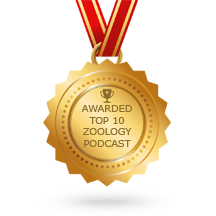Episode 77: South American Gomphotheres
The proboscideans are a group of animals that contains the elephant and mastodont families. Many of us will be well-aware of these groups, but what of some of the lesser-known proboscideans? One such family are the gomphotheres and in this episode we’re introduced to them by Dr Dimila Mothé, of the Federal University of the State of Rio de Janeiro, Brazil.
Podcast: Download (71.4MB)

My first time in a paleontological collection, at the Pontifícia Universidade Católica of Minas Gerais, Brazil. This collection houses the most complete brazilian specimen of Notiomastodon platensis skull, this one on the picture. This collection is also the biggest one of Quaternary fossil mammals in Brazil.

This picture is very important to me, because it was my first day at the Proboscidean Collection at the American Museum of Natural History, in New York, USA. This collection houses proboscideans from all over the world (including thousands of gomphotheres), and great paleontologists, such as Osborn, Frick, and Simpson, worked there.

This picture was taken in 2012, inside the Gruta do Urso cave, in Tocantins, Brazil. The Mammalogy Lab of the Federal University of Rio de Janeiro State, coordinated by Professor Leonardo Avilla, conducted annual fieldtrips to this region in Brazil, and this cave holds the greatest number of Quaternary mammals in Brazil.

In this picture, I am at the Municipal Museum of Natural History of Milia, Grevena, Greece (during the International Congress on Mammoths and their Relatives), with the biggest pair of tusks of a proboscidean (a true mastodon, Mammut borsoni).

During my Doctorate, in 2015, I conducted part of my research at the University of Florida, and I was invited by my advisor, Dr. Bruce J. MacFadden, to go on this fieldtrip at the Panamá Channel. A great and unforgettable experience!

Also during my Doctorate, I visited several collections in USA, including this one, at the New Mexico Museum of Natural History and Science. Two of the greatest speciallists on fossil proboscideans work in this institution, Dr. Spencer Lucas and Dr. Gary Morgan, and visiting this collection was a great opportunity to discuss important issues on New World gomphotheres with both of them.

In 2016, I was invited, together with Dr. Leonardo Avilla, to visit the collection of fossil mammals of the Universidad ICESI, in Cali, Colombia. It was my first time in this beautiful country, which has several records of Notiomastodon platensis, and I was also invited to present a conference about proboscideans in this institution.

Picture taken during the March For Science, in Rio de Janeiro, Brazil, when scientists from Rio were protesting against the scientific funding cuts and the exclusion of science from basic education. My sign says, in Portuguese, something as “Pretty, PhD and Scientist”, a way I found to support and represent female scientists in this March For Science and to wrestle against stereotypes of women in science.

My last birthday cake, made by the Mammalogy Lab team, in honor of my studies on fossil proboscideans (and personal style: striped shirt, short hair and big glasses).

Reconstitution of the Águas de Araxá assemblage (Minas Gerais, Brazil), famous due the huge presence of Notiomastodon platensis (more than 40 individuals). Other Quaternary mammals were also recorded to this locality, such as horses and macrauchenids. Image by Pablo Lara.

Sinomammut tobieni, the true mastodon described to China last year, during my Doctorate on proboscideans. It was first described as a gomphothere, but some molar features belong to the family Mammutidae. Image by Renata Cunha.

Visiting the paleontological collection of the Universidad ICESI, in Cali, Colombia (2016) and extracting some dental calculi/plaque from Notiomastodon platensis molars, to conduct paleoecological studies on its paleodiet.

During my Master’s degree, working on this specimen of Cuvieronius hyodon adult skull from Tarija, Bolivia, at the Museo Argentino de Ciencias Naturales Bernardino Rivadavia, in Buenos Aires, Argentina. Note the great twisted upper tusks of this specimen, a very rare feature among the proboscideans.

MEV pictures of microwear scars on enamel molars of mammals, caused during the mastication of food items. The total number of each scar and the proportion among them infer if the individual/species was browser, grazer or mixed-feeder.

Molar of Notiomastodon platensis from Brazil, full of dental plaque (purple shapes between the lophids of the molar). These mineralized deposition is formed during all life span of the individual, and includes fragments of food items, such as phytolits, polen grains, spores, plants fragments, etc.

















